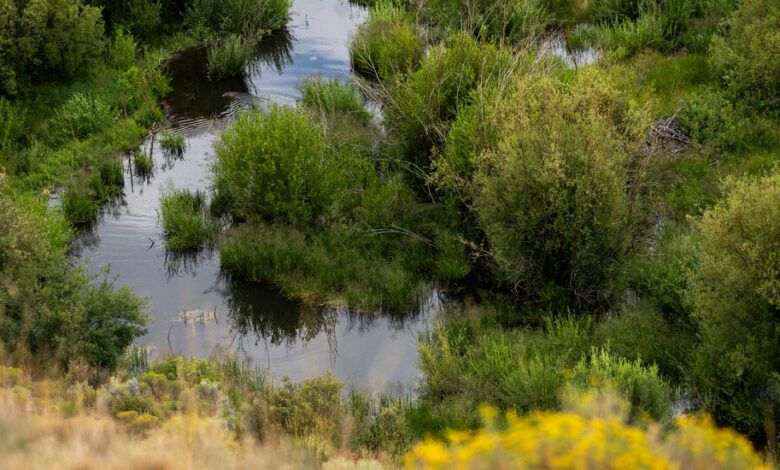Research shows that small streams, recently stripped of protection, are a major problem

Last year, the Supreme Court imposed significant limits on the federal government’s ability to limit pollution in small rivers that are dry for much of the year and only fill after rainfall or snowmelt.
A new study now shows that these water bodies, called temporary streams, are much more important to the country’s waterways than often thought.
The research published Thursday in the journal Scienceestimates that 55 percent of the water flowing from America’s river basins can be traced to millions of ephemeral streams that flow only periodically. The findings suggest that the Supreme Court’s ruling, which rolled back protections for those streams, could leave large bodies of water vulnerable to pollution.
“Right now we regulate larger waterways like the Hudson River, but a significant portion of that water comes from upstream places that can no longer be regulated,” said Craig Brinkerhoff, a doctoral candidate at the University of Massachusetts Amherst and leader of the study.
For years, politicians, industry groups and environmentalists have debated which bodies of water in the United States should fall under the jurisdiction of the Clean Water Act, a sweeping 1972 law that allows the Environmental Protection Agency to limit water pollution. While there is consensus that the law applies to major rivers and lakes, there is debate over whether federal protections should apply elsewhere, such as to nearby wetlands or streams that are dry for part of the year.
Environmentalists favor broad protection, arguing that these other water bodies are important; homebuilders, some industry groups and conservatives are pushing back against what they see as excessive oversight.
In May 2023, the Supreme Court voted 5-4 to limit the scope of the Clean Water Act, with the majority holding that the law should apply only to “relatively permanent, stagnant, or continuously flowing bodies of water,” as well as to wetlands that have “a continuous surface connection” to those bodies of water.
The ruling effectively ended federal protections for more than 4.9 million miles of streams that flow only when it rains, according to EPA officials, who announced in August they would follow the court’s guidelines.
These temporary streams are often overlooked because they look like unremarkable dry ditches most of the year, said Jud Harvey, a senior research hydrologist for the United States Geological Survey, who wrote a separate comment about the Science Study. “But when it rains,” he said, “these streams carry a considerable amount of water,” which flows into rivers and lakes.
Mr. Brinkerhoff and his colleagues identified millions of ephemeral streams across the country and used detailed models to estimate how much water flows through them.
In the West, ephemeral streams flow an average of only four to 46 days per year, but they contribute up to 79 percent of downstream river flow, the study found. Ephemeral flows contribute, on average, about 55 percent of flow in river basins in the contiguous United States.
Mr Harvey said he was surprised by the amount of water coming from ephemeral streams. “But it is a rigorous and detailed investigation using the best available data in the United States,” he said of the study.
Because so much water flows through these streams, the study notes, whether or not they are polluted matters greatly. Sediments or excess phosphorus from fertilizer runoff from farms can build up in dry channels until a heavy rainstorm picks up the pollutants and flushes them into larger waterways.
Mr. Brinkerhoff said the study did not attempt to quantify how much pollution is actually flowing through those streams. That is a topic for future research. But, he said, these flows have a major impact on water quality.
Even if the EPA can no longer regulate pollution in ephemeral streams, some states are still trying, said Ciaran Harman, an associate professor of landscape hydrology at Johns Hopkins University who was not involved in the study. For example, farmers can allow grasses and other vegetation to accumulate around ephemeral streams to limit erosion and prevent pollutants from entering waterways after storms. Still, state plans can vary widely, and it can often be difficult for states to coordinate water regulations.
In the past, the EPA often used new scientific research to update and sometimes expand the scope of water regulations, said Jon Devine, who leads the federal water policy team at the Natural Resources Defense Council, an environmental group. “Regulators would look at whether different water bodies contribute to downstream water quality, and if so, should they be protected,” he said. “Essentially that is a scientific study.”
But after the Supreme Court’s decision, Mr. Devine, the EPA’s ability to review those regulations has been significantly curtailed. “You really need Congress to step in,” he said.




